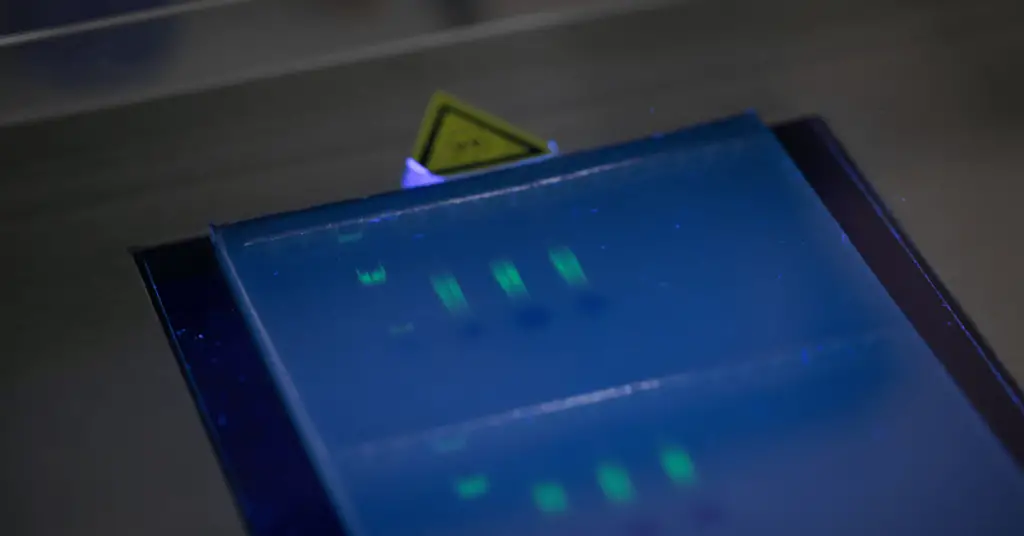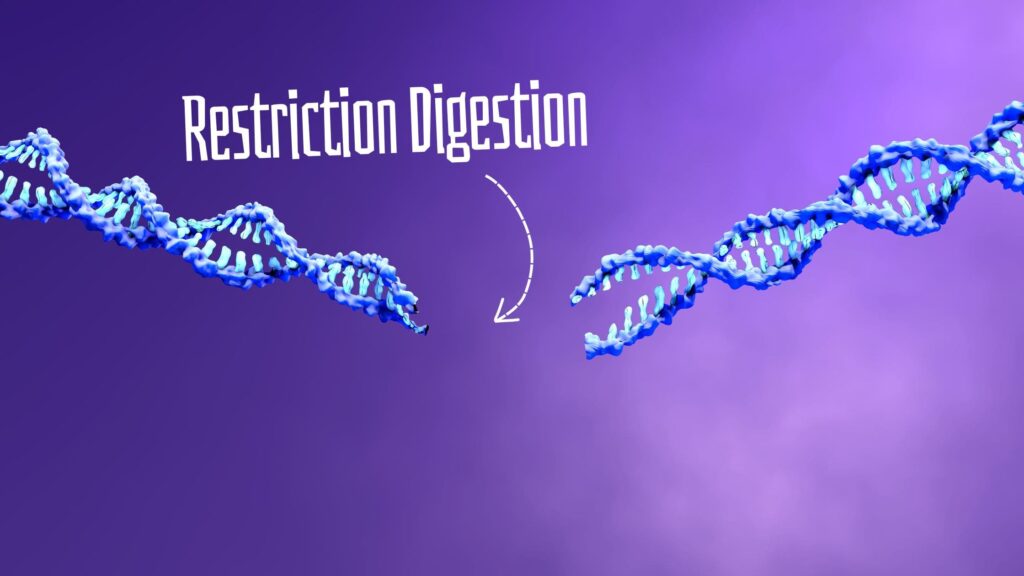“In this article learn common issues and troubleshooting for RFLP (Restriction Fragment Length Polymorphism).”
RFLP (Restriction Fragment Length Polymorphism) is a genotyping technique that works on the principle of amplifying the gene followed by cleaving it at recognition sites by a restriction enzyme and lastly separating the fragments by gel electrophoresis.
RFLP is a combination of techniques such as DNA extraction, PCR and gel electrophoresis. Therefore, it comes up with chances of errors and unexpected results at every step.
Unexpected or situations like no results arise due to common issues with the experimental procedure, however, other uncommon and typical problems are observed due to restricted digestion.
In this article, you will learn about common issues with RFLP analysis and how to solve these issues by troubleshooting. After reading this article you will be able to solve the common and specific problems associated with RFLP analysis.
Stay tuned.
Related article: A Guide To Read and Understand Restriction Digestion Gel Results.
Disclaimer: This article is written from my lab experiences, including the challenges I’ve encountered and the troubleshooting tips that helped me overcome them.
Key Topics:
RFLP Issues and Troubleshooting
No digestion or poor quality digestion, unexpected digestion, and over-digestion are common problems observed during the RFLP analysis. However, problems can also occur during DNA extraction and PCR amplification, those two are discussed in separate articles.
We here only focus on the RFLP problems and troubleshooting.
- No or poor-quality digestion
- Unwanted digestion
- Over-digestion
These are the three common issues that can occur during your RFLP experiment. Let’s discuss probable causes behind these three common issues so that you can understand the problem and then move to troubleshooting so next time you can get the best possible results by RFLP analysis.
No or poor-quality digestion
In this case, digestion does not occur or digestion occurs but the quality of digestion is very poor. You are not able to view banding patterns using gel electrophoresis.
Here is the representative image that I captured during my research work involving RFLP analysis, in which no bands were seen. In this image, no bands were seen except the DNA ladder of 100 bp. So let’s discuss the probable causes if you are also getting results like this.
No digestion or incomplete digestion can occur due to the causes discussed below.
Enzyme Selection:
First, you need to know if the selected restriction enzyme is specific or not. Meaning, it should be at a specific location which we would like to study. To do so, what you can do is, use the NEB Cutter software.
Troubleshooting:
NEB Cutter is a free online restriction enzyme selection tool. You can read our step-by-step guide to use NEB cutter for selecting a restriction enzyme.
If you find the restriction enzyme, you selected; in the list of recommendations, this means, the selection is correct. It validates that the recognition site is present in your chosen gene or interest.
Only select NEB cutter verified restriction enzymes. Learn to correctly use the NEB cutter for your experiment. You can follow our guide to use it. In addition, order the enzyme, kits and other reagents from a reputed and trusted vendor.
Enzyme storing and ordering conditions:
Compromising enzyme ordering transportation and storage conditions also cause no or poor amplification.
Troubleshooting:
In the next step, you must check the details of the restriction enzyme ordered. Always order the restriction enzyme from a trusted company. Once you receive the order you must check the expiry date of the restriction enzyme if it has gone past the expiry date then you may not get the results.
Check that the restriction enzyme is stored properly in suggested conditions. Restriction enzymes should be stored at -20°C. Whenever you want to use it, do a proper thawing and always use it under chilling conditions (use an ice box) during the experimental procedure.
Upon receiving the order, check the transportation conditions (-20°C) and do documentation validation.
Inadequate reaction conditions:
Restriction digestion mixture contains several other ingredients as well including restriction endonuclease buffer, nuclease-free water, and other additives if required. Restriction enzyme activity will be reduced if you are using a buffer other than specified in the product support material.
Contaminated DNA templates can also lead to no or poor quality restriction results. Sometimes PCR templates can also be contaminated with PCR components used for PCR reactions.
In addition, incorrect incubation will also cause the same problems.
Troubleshooting:
Add an adequate amount of enzyme to the reaction mixture. Adding a low amount of RE leads to poor quality digestion and you will not get the desired results. Usually, 1/10 volume of RE should be added to the reaction mixture.
Always add the RE at last, when you are preparing the reaction digestion mix. For example, if you want to make a 20 µL reaction digestion mix, add 2 µL of RE at last. Adding RE lastly, will reduce the chances of early enzymatic activities.
Check the quality as well as quantity of DNA to overcome contamination problem. For best results, the concentration of DNA should be between 20 – 100 ng/µL while purity measured by 260/280 absorbance ratio should be between 1.8 to 2.0. Also always do the experimental work in sterile areas or in Laminar Air Flow.
If you have done the experiment in sterile conditions with an adequate amount of RE and pure high-quality DNA but still not getting the results then you should check the incubation time as well as optimal reaction temperature.
Incubation temperature has a significant impact on RE activity. Incorrect incubation time or temperature, or both leads to no or poor RFLP results.
For example you have an enzyme that needs overnight incubation at 37°C for proper digestion of the PCR template and you are incubating it for just a few hours at 55°C then there is a very high chance that you will not be getting any results. So always check, at which temperature the enzyme is having high enzymatic activity.
Always use molecular biology grade nuclease-free water.
For desired results use buffers and nuclease-free water which are appropriate for the restriction enzyme, add a sufficient amount of restriction enzyme to the digestion mix, and use PCR or DNA templates that are not contaminated. Prepare the digestion mix in a sterile area and give sufficient incubation time at a required temperature.
Unexpected or unwanted digestion:
Unexpected or unwanted digestion is observed when you get the results that you actually don’t want. For instance, you expected to digest 200 bp fragments into 80 and 120 bp restriction digestion products, and you got something different!
Here are some of the reasons and troubleshooting for this.
Contaminated DNA or PCR Templates:
If you use a contaminated template then there are chances that you get unexpected digestion or fragmentation patterns. For example, your template is contaminated with other DNA templates which also have restriction sites for the enzyme but it generates a fragment of different sizes that results in many band patterns in RFLP analysis.
Troubleshooting:
Use the PCR or DNA templates with high purity and always check the purity of DNA templates before using them for digestion.
Run the PCR amplicons on a 2% agarose gel before using them for restriction digestion.
Primer dimers products:
Sometimes, primers give shorter amplicons as dimers, interfere with the original digestion product and misinterpret the results. For instance, our 80 bp digestion product can easily be mixed up with dimers, as dimers usually range between 50 to 80 bp.
Rarely, do primers get amplified and give shorter fragments of up to 100 bp that may also contain “some” recognition site, allow further digestion and mix up with the final results.
Troubleshooting:
Follow strict PCR conditions, and use well-designed PCR primers for the amplification. Go with a decent protocol and follow good lab practices to prepare the PCR reaction, this can reduce the likelihood of primer dimers.
These articles can help you with this:
- What are Primer Dimers? – A Beginner’s Guide.
- PCR Troubleshooting 103: How to Address Primer-Dimers.
- How to Design PCR Primers?
High doses of restriction enzyme:
If you are using a high amount of restriction enzyme then it can also lead to unexpected banding patterns during RFLP analysis. High doses of enzymes can sometimes lead to a gel shift effect where you are getting another band with the desired one.
Troubleshooting:
Use the restriction enzyme in an adequate quantity, not too high and not too low. To do so, follow the manufacturer’s instructions for reaction preparation.
Off-target cuy by restriction enzyme:
Sometimes, some random mutation can create another recognition site in the template DNA that can cleave off-target. This can produce unexpected banding patterns during RFLP analysis.
Troubleshooting:
Off-target effects are very rare. To troubleshoot it, re-evaluate the RE selection process and send the product for sequencing. DNA sequencing will reveal if it contains any mutation that produced a new recognition site or not.
Prolonged Incubation:
When you incubate the restriction digestion mix for more than the required time it results in the over-digestion and leads to unexpected results.
Troubleshooting:
Use proper reaction conditions, for instance, adequate enzyme concentration and incubation conditions.
Over-digestion
Over-digestion is also a common problem for many RFLP experiments. This usually results in recognition site slippage and unwanted, and random amplification. Usually, REases are highly “recognition site specific.” Meaning, that they can only cleave if they find their recognition site.
However, oftentimes, prolonged incubation, compromised reaction and incubation conditions can compromise the recognition sites, the RE also cleaves similar or random sites in the sequence.
This results in over-digestion.
Troubleshooting:
Use adequate restriction digestion conditions. Use the incubation, temperature and reaction conditions provided by the manufacturer only.
Bonus Optimization
Next time whenever you do RFLP analysis make one control reaction mix by using standard control DNA like lambda DNA where you know that DNA is of high quality and has multiple restriction sites so you will be able to check the activity of the restriction enzyme properly.
Wrapping up
RFLP is the oldest, most popular and most conventional genotyping technique. It’s accurate, sensitive and precise. However, it has low throughput. Researchers are still using it for various research modules.
I personally like RFLP due to the flexibility, and less computational and analysis efforts it provides. So that’s it, I hope you will be able to solve all your issues with RFLP analysis after reading this article.
Do subscribe to our blog and share this article.

